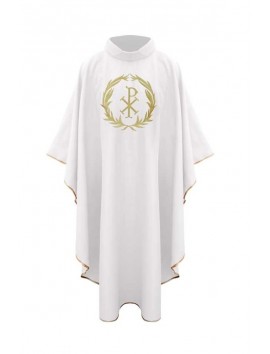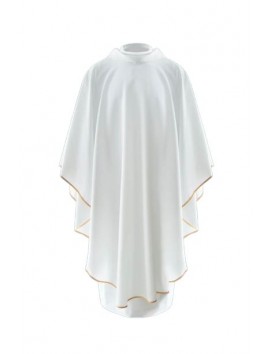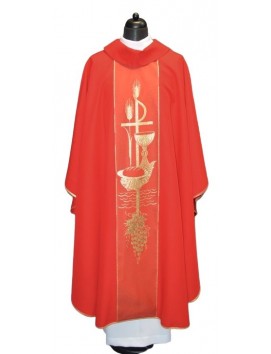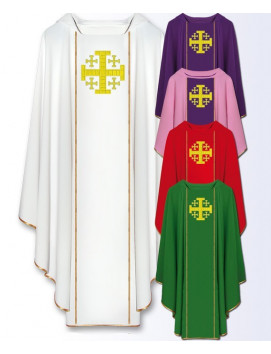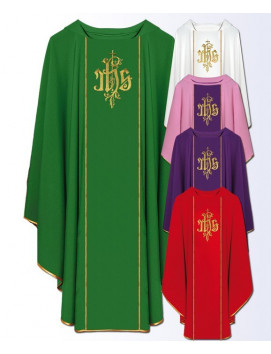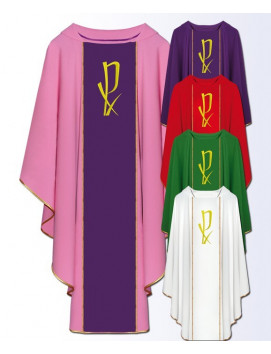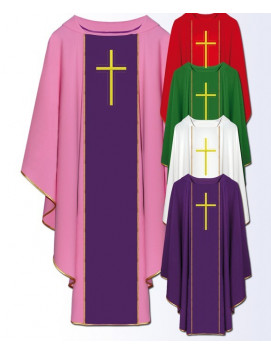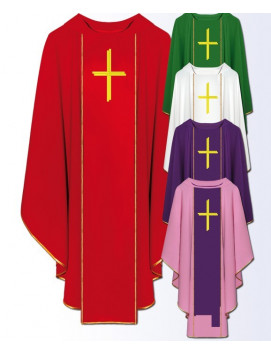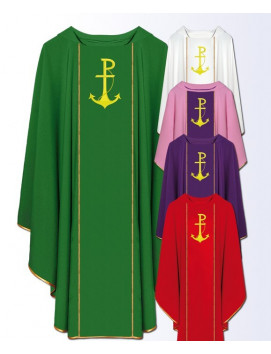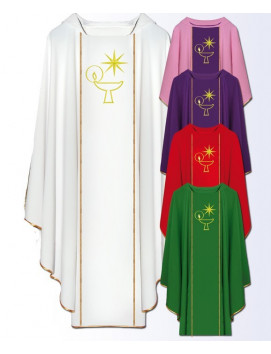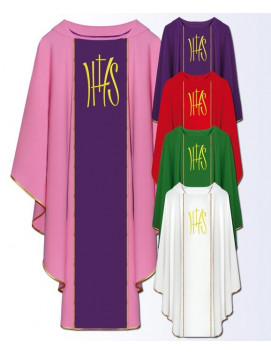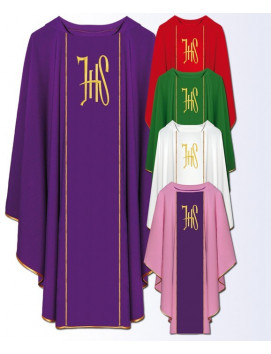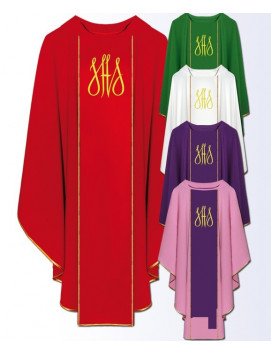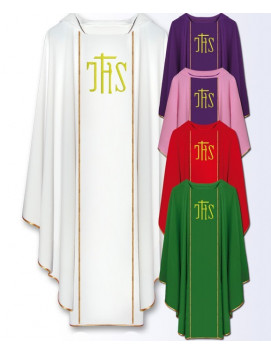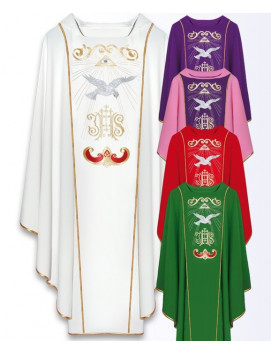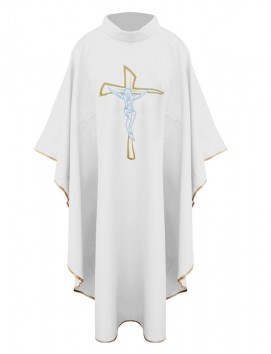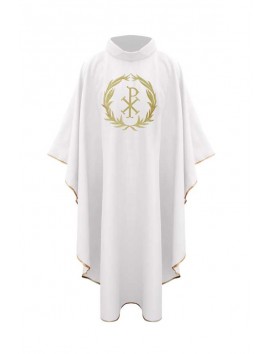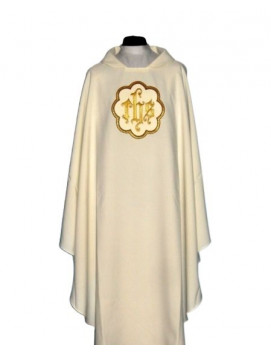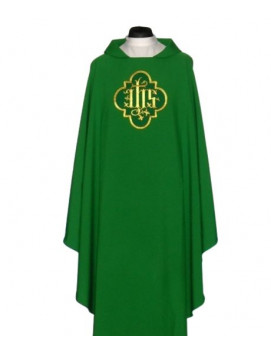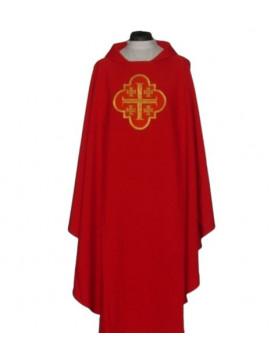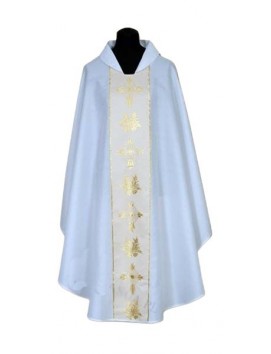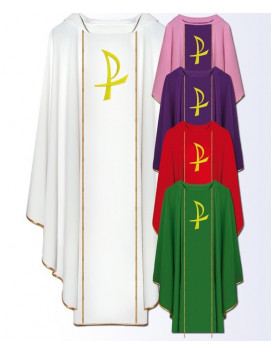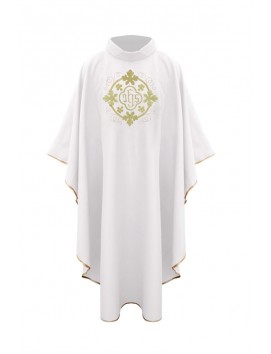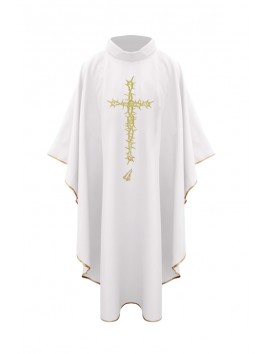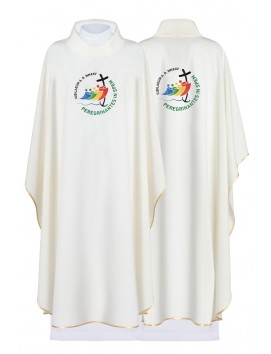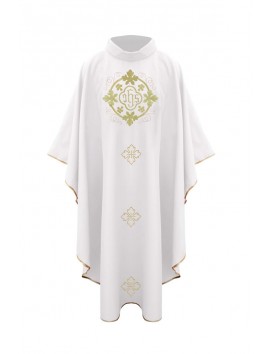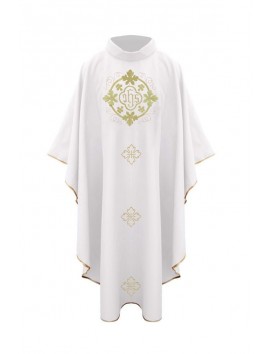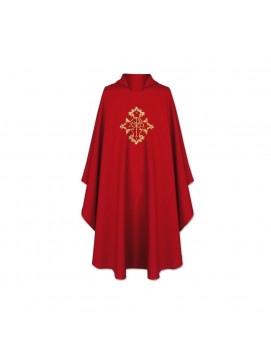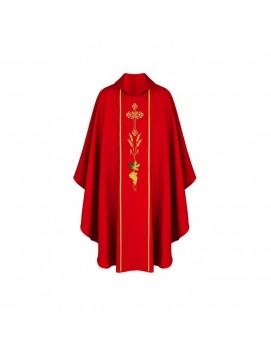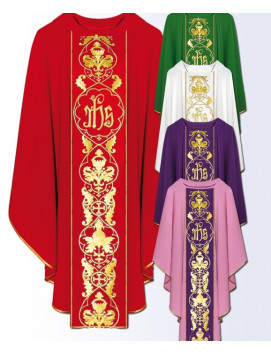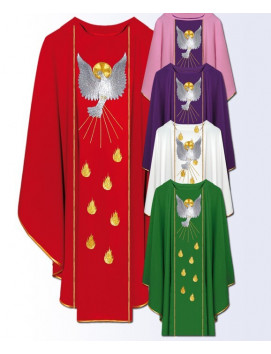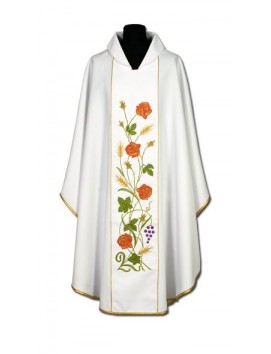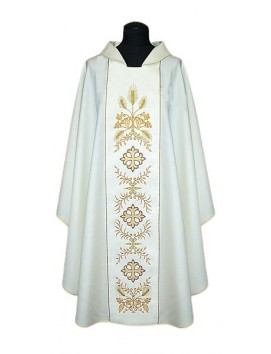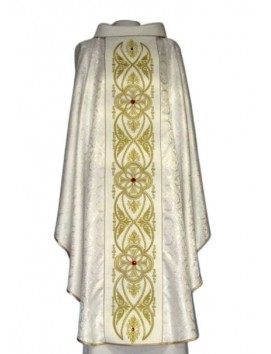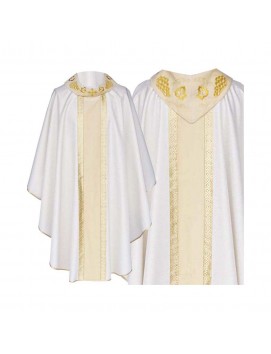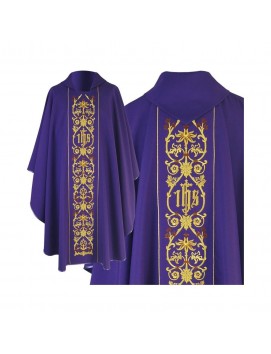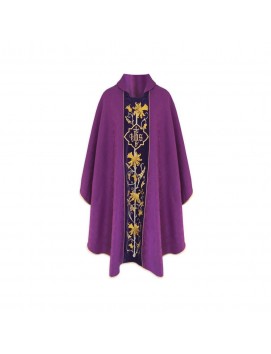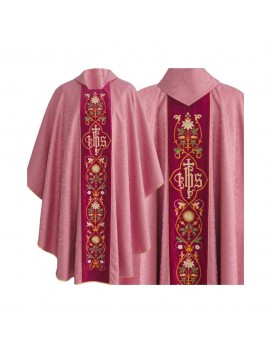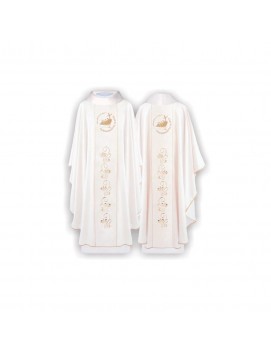No products
White chasubles
White chasubles are liturgical vestments worn by Catholic priests during the seasons of Easter and Christmas, as well as on all feasts of Our Lord other than his Passion, on feasts of the Blessed Virgin, the angels, and those saints who were not martyrs. White chasubles are also worn on the Solemnity of St. Joseph, and the Feasts of All Saints, St. John the Baptist, St. John the Evangelist, the Chair of St. Peter, and the Conversion of St. Paul. White represents joy, innocence, purity, and glory. It is also the color of the Pope's non-liturgical dress. White chasubles can be purchased from various online shops and are often made to order.
White chasubles are liturgical vestments worn by Catholic priests during the seasons of Easter and Christmas, as well as on all feasts of Our Lord other than his Passion, on feasts of the Blessed Virgin, the angels, and those saints who were not martyrs. White chasubles are also worn on the Solemnity of St. Joseph, and the Feasts of All Saints, St. John the Baptist, St. John the Evangelist, the Chair of St. Peter, and the Conversion of St. Paul. White represents joy, innocence, purity, and glory. It is also the color of the Pope's non-liturgical dress. White chasubles can be purchased from various online shops and are often made to order.
-
Gothic chasuble PX - liturgical colors (14) Gothic chasuble PX - liturgical colors (14)
Gothic chasuble PX - liturgical colors (14) Gothic chasuble PX -...
$ 171
The Enigmatic Charm of White Chasubles
White chasubles are not just items of fabric; they are stories woven into the very fabric of Christian liturgy.
These sacred vestments, draped over the shoulders of priests and bishops during Mass, carry a symbolism that transcends their physical beauty.
Let's dive into the world of white chasubles, exploring their significance, history, and the occasions that call for their use.
The Symbolism Behind the White
White chasubles are more than just a choice of color; they are a profound statement.
Representing purity, joy, and the Resurrection of Jesus Christ, white chasubles are a beacon of hope and celebration in the Christian faith.
They are worn during the most joyous occasions in the liturgical calendar, such as Easter and Christmas, signifying the triumph of light over darkness.
A Journey Through Time
The history of white chasubles is as rich as the faith itself.
Originating from the simple garments of early Christian priests, these vestments have evolved over centuries.
In the Roman era, the chasuble was a circular garment, enveloping the wearer, symbolizing the universality of God's love.
As time progressed, the design became more streamlined, allowing for greater movement, but the symbolism and the color white remained constant, a testament to the enduring nature of its message.
When White Chasubles Take Center Stage
White chasubles are not everyday attire; they are reserved for specific liturgical celebrations.
Easter and Christmas are the highlights, where the white chasuble shines as a symbol of joy and rebirth.
But its use extends beyond these festivals.
Feasts dedicated to the Virgin Mary, saints who were not martyrs, and occasions celebrating the mysteries of Christ's life also call for the white chasuble.
It's a visual cue to the congregation, signaling a time of celebration and reflection on the purity and love of God.
The Modern-Day White Chasuble
Today, white chasubles blend tradition with contemporary design.
While maintaining the symbolic white, modern vestments incorporate intricate embroidery, gold trim, and even artistic representations, enhancing their beauty and significance.
They are a blend of the past and present, carrying ancient traditions into modern worship with elegance and reverence.
FAQs: Unveiling the Mysteries
Q: Can white chasubles be worn outside of Easter and Christmas?
A: Yes, white chasubles are also worn during celebrations of the Virgin Mary, saints who were not martyrs, and other specific feasts and sacraments that symbolize joy and purity.
Q: How are white chasubles made?
A: White chasubles are crafted from various materials, including silk and linen, and often adorned with gold trim, embroidery, and religious symbols to enhance their significance and beauty.
Q: Do all Christian denominations use white chasubles?
A: While the use of white chasubles is most common in Roman Catholic, Anglican, and some Lutheran traditions, the practices can vary among different Christian denominations.
Q: How should a white chasuble be cared for?
A: Given their sacred use and often delicate materials, white chasubles should be handled with care, cleaned according to the fabric specifications, and stored in a way that preserves their form and detailing.
In Conclusion
White chasubles are a testament to the enduring power of faith, tradition, and the universal message of hope and purity they convey.
They remind us of the joyous moments in the Christian liturgical calendar and invite us to reflect on the deeper meanings behind these celebrations.
As we witness the white chasuble in use, let us remember the rich tapestry of history, symbolism, and faith it represents, connecting us to generations of believers who have come before.

